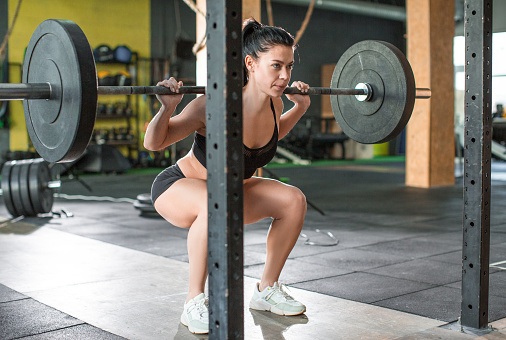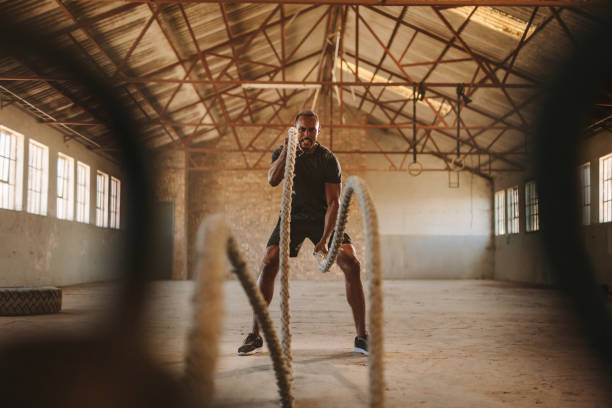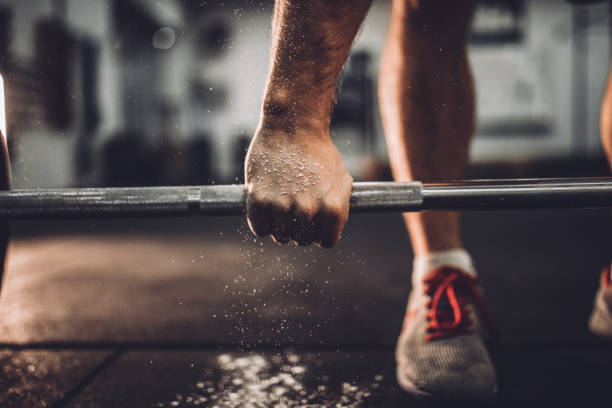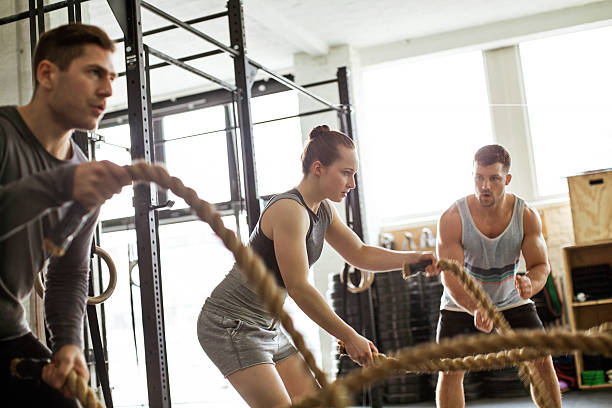If you’re finding it hard to break through your weightlifting stagnation, these aspects might be contributing to your struggle.
Many people think that the only way to break a weightlifting plateau is to increase their workout intensity-to work out harder and longer. Increasing the intensity of your workouts can indeed help, but other factors may be inhibiting progress.
We’ll explore everything from the science of plateaus to specific strategies for breaking them here.
What’s behind your weightlifting plateau?
A plateau in weight training is defined as the point at which you stop making progress. You might notice that it takes longer to see noticeable changes in your physique or that your muscles aren’t growing like they used to.
You may also read: Does CrossFit Build Muscle for Older Adults
This happens after about three weeks of consistent training (for others, it can take as long as eight weeks). But don’t worry-we’ll talk about specific strategies for breaking through your plateau and making progress again.

Is it a fat loss or muscle-building plateau?
First of all, you need to figure out what type of plateau you’re experiencing. The reason you’re struggling maybe that you’re in a caloric deficit because you’re trying to lose fat. If this is the case, then weightlifting isn’t your primary concern-focus following a solid nutritional plan instead!
If you are looking to build muscle mass, it may be time to increase your workout intensity.
What’s going on with your workout program?
You may be working out consistently and intensely, but that doesn’t mean you’re following a solid weightlifting plan. You need to ensure that the program you’re using has been proven to work and that it’s tailored to your goals (if you want to build muscle, for example).
Many people spend hours in the gym without ever seeing results. If this sounds like you, it’s time to find an efficient workout program!

Your Rep Range may be too Low
If your reps are too low (if you’re using 12 or fewer reps for most exercises), then you need to either increase your weight, decrease your rest periods, or increase the number of sets you’re doing.
The reason for this is that lower reps have a more significant neurological effect, so they help you build strength and muscle mass quickly.
This often leads to quick early progress, but it can also contribute to a weightlifting plateau. The reason is that over time, your muscles become accustomed to the stimulus of lower reps, and it becomes harder to see results.
If you’re working too low of a rep range, consider using either more sets or higher reps (or both).
Are you taking enough time between sets?
The amount of time that you rest between sets can affect your weightlifting plateau for two reasons. First off, it can be difficult to work hard when you’re tired- especially if you need to keep your heart rate elevated throughout the session.
If this is happening, the solution is simple: take more time between sets! You want to make sure that you have enough energy to train effectively for each set. Otherwise, muscle growth becomes inefficient and complex.
Also read: Best Weightlifting Belts for Heavy Squats – 2021 Reviews
The other reason is that your muscles become adapted to the stimulus of weightlifting over time. If you don’t frequently change up your routine (and rest periods, in this case), it will be challenging to experience progress.
A solution could be to do supersets (alternating between two exercises) or circuits (where you do each exercise once, then rest for some time before repeating).

Are you pumping yourself up?
Before every set, it’s common to experience some psychological arousal. But this is usually not enough to help you break through your weightlifting plateau. To do so, consider using physical arousal instead!
What does this mean? If you’re lifting in a traditional gym, try wearing headphones before every set. This will keep you from overthinking your workout. All it takes is one person to give you an unhelpful tip or suggestion about what exercise to do next.
If you prefer working out at home, consider making music that gets you excited and makes your body feel full of energy.
What about rest days?
Resting is just as crucial for weightlifting progress as actually working out! If you spend too much time exercising in the gym, your body will begin to adapt to this stimulus, and it isn’t easy to see results.
Your muscles need time to repair themselves so they can grow bigger or stronger.
If you don’t give them this time, they won’t be able to adapt to the stimulus, and you’ll plateau!
Important note: If you train every day for more than three sessions in a row, your workout intensity will decrease significantly (even if you’re training with weights). This is because the central nervous system becomes adapted to the stimulus of weightlifting.

Don’t Forget About Your Diet
Muscles don’t grow in the gym-they need proper nutrients to do so! You can have a great workout, but if you don’t eat the right foods, your body won’t maximize your gains from exercising. Be sure you’re eating the right amount of protein, carbohydrates, and fats to maximize your muscle growth.
You may also try: Best Creatine Supplements – 2021 Reviews
Finally, you need to make sure that you’re drinking enough water every day. When you feel thirsty, it’s too late-that means your body is already dehydrated. So how much should you be drinking? Science says about 1 milliliter for every calorie that you eat. That means if you take in 2,000 calories a day, you should be drinking about 2 liters of water.
Don’t forget that this is just the science behind weightlifting plateaus-to get strategies for breaking out of them, keep reading!
So what can we do to break through a weightlifting plateau?
Here are some strategies that can help:
Use Different Exercises/Mix Up Your Routine
It’s important to remember that the human body is very good at adjusting to stimuli-this is why you need to change your routine! If you keep doing the same workout every day, eventually, there won’t be anything new for your muscles to experience, and you’ll stop seeing results. This is not to say that you should never use the same exercises twice in your program, but it’s good to switch things up every few weeks so that you don’t plateau.
Focus on Form, Not Weight
If you’re trying to break out of a weightlifting plateau, then there’s no time to try lifting as much weight as you can. Instead, be sure to maintain good form throughout your workout-doing so will help you avoid injury, which could mean that you have to stop working out for weeks or months.
Make Changes to Intensity/Duration of Workouts
If this is your first time trying a new type of training, you should consider changing your workout intensity or duration.
For example, if you’ve been doing three sets of 10 reps for the past three weeks, try increasing the weight so that it’s difficult for you to get 8-12 reps in each set instead. This way, you’ll be able to gain strength while not sacrificing form-and you’ll start seeing results again!
Recover Completely
Just like your muscles need to repair themselves, so do the nerves that send information to and from your brain! This is why it’s always a good idea to take at least one whole week off every few months. Your body needs time to recover and reset itself-and you won’t be able to see results if you’re working out while exhausted.
Don’t Forget About Your Diet
Eat the right amounts of protein, carbohydrates, and fats to maximize muscle growth!
Drink Enough Water Every Day
When you feel thirsty, that means your body is already dehydrated, so drink 1 milliliter of water for every calorie consumed.
Keep Track of Your Progress Consistently
What good is setting new personal records if you never write them down? Track your workouts by writing down the exercises, reps, intensity, and set length that you use each time you train. Over time this will help you know how long it takes to see results from different types of training, and you’ll be able to tell when it’s time for you to change things up!

Conclusion
If you’re struggling to break through a weightlifting plateau, don’t worry-you’re not alone. In this article, we discussed everything from the science of plateaus to specific strategies for breaking out of them! By following these strategies, you’ll be able to bust through weightlifting plateaus! Now, if only there were some way to make sure that I didn’t hit a plateau.





